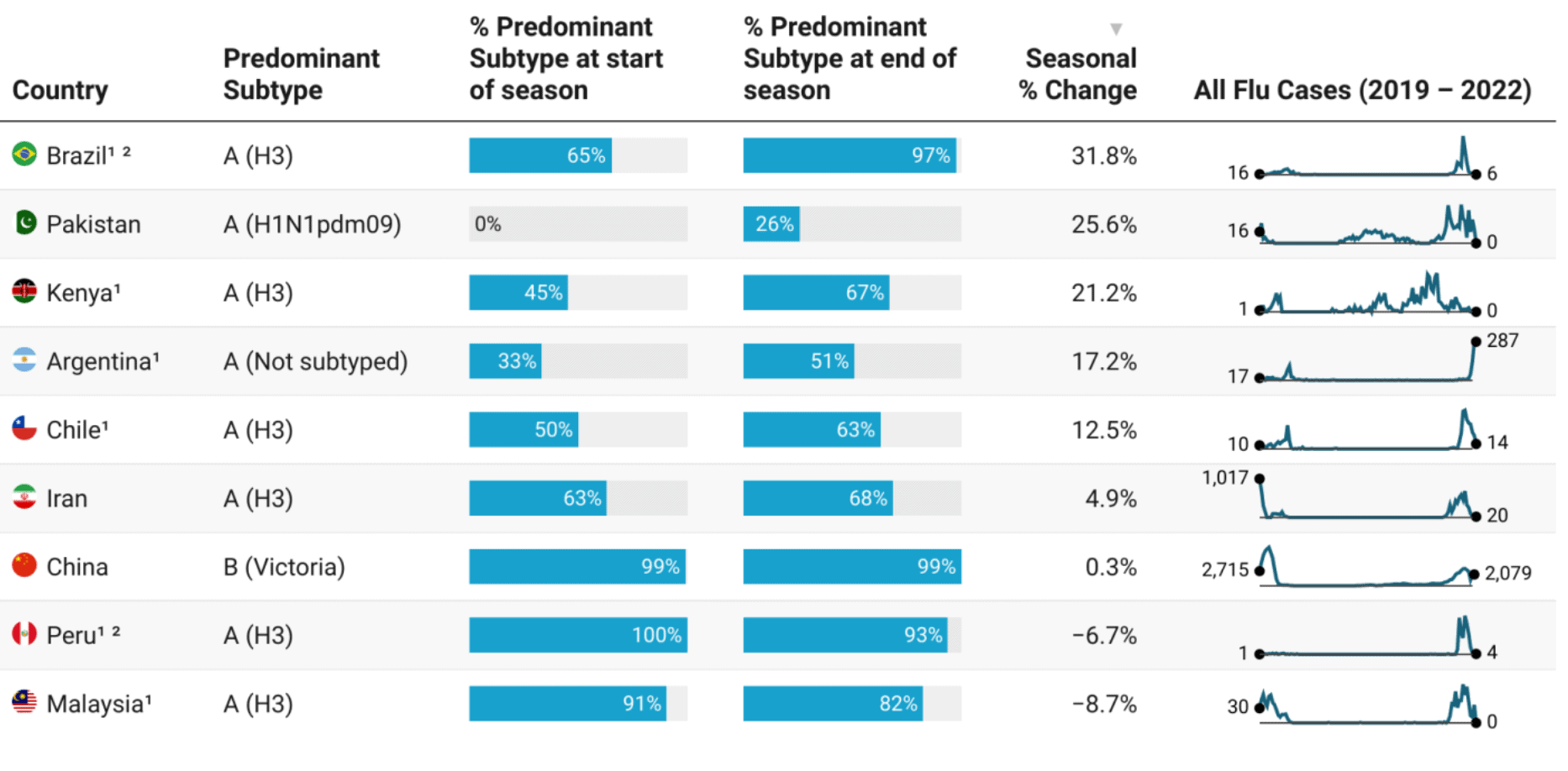Are you ready for more active and severe flu seasons?
Through our global disease surveillance engine and in-house epidemiology expertise, BlueDot takes a detailed look at the global 2021/2022 influenza season and shares opinions on global trends and activity, including predictions for the 2022/2023 season.
Rising Activity & Longer Seasons
Global influenza activity in the 2021/2022 season has increased compared to last year, though it remains lower than historical pre-pandemic levels. Lower levels are likely due to public health measures implemented to curb the spread of COVID-19. As these measures lift, activity is expected to increase. Locations within tropical South America are already nearing pre-pandemic levels (i.e., 2018-2019) of influenza activity. In the U.S., many states are seeing an increase in positive test rates outside of the typical season, signaling a longer flu season. U.S. influenza test positivity values in Epi week 14 (early April) were 9.15% in 2022, compared to under 0.08% in 2021.
Subtype Shift from Influenza B to Influenza A
The predominant subtype of influenza globally is shifting from Influenza B to Influenza A subtypes, however there is still variation at a country-level as shown in the figure below. Brazil, Pakistan, Kenya, and Argentina have reported the largest seasonal change. Influenza A, particularly A(H3N2) is associated with greater severity, higher disease burden, and reduced vaccine effectiveness.

Source: 2021-2022 Global Influenza Trends & Future Outlook report, BlueDot
2023 Global Influenza predictions
Public health officials, corporations, and individuals should prepare for greater influenza activity and more severe outcomes in the 2022/2023 season.
- Increased susceptible population: Maintenance of preventative measures over the last two years may result in an increased susceptible population due to limited exposure via infections or immunization
- Continued predominant circulation of Influenza A (H3N2): Influenza A (H3N2) is expected to remain predominant in 2023, which may lead to greater peak activity and severe outcomes
- Combined influenza and COVID-19 waves: Influenza seasons may coincide with epidemic waves of COVID-19, which could lead to further disruption for public health and healthcare, corporations, and the economy
Be Prepared
To prepare for more severe and active influenza seasons, we recommend organizations and public health officials start by:
- Educating individuals about the flu shot
- Masking in crowded areas
- Reviewing sick leave policies
- Improving indoor air ventilation
- Remaining informed
Remain Informed & Act With Confidence
BlueDot monitors and analyses emerging and re-emerging disease threats, such as influenza, so you don’t have to. Get access to the latest information, captured by cutting edge technology then vetted and contextualized by in-house experts so you can act quickly and confidently to build resiliency and protect your operations, citizens, and economy.
Gain the intelligence, insights, and context you need to act with confidence.









